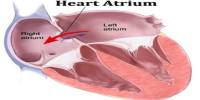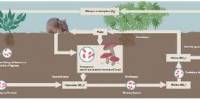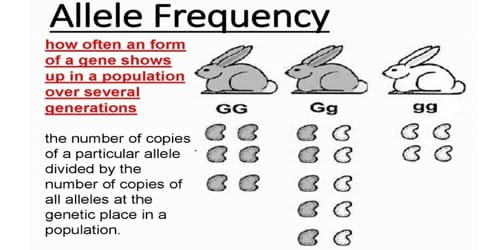The early stages of social behavior development are poorly understood. However, the majority of animals, including humans, have the capacity to connect socially or establish bonds with others from birth. And that helps people succeed throughout their lives.
A gene that is critical for the earliest development of fundamental social behaviors has now been identified by a new animal study.
The research also reveals that exposure to specific medicines and environmental risk factors can modify this gene during embryonic development, resulting in social behavior changes that are comparable to those seen in autistic people. To their astonishment, the researchers also discovered that by employing an experimental medicine, they could partially undo some of the effects.
“This study helps us understand at the molecular level why sociability is disrupted during the very earliest stages of life,” says Randall T. Peterson, Ph.D., the corresponding author of the study and dean of the University of Utah College of Pharmacy. “It also gives us an opportunity to explore potential treatments that could restore sociability in these animals and, perhaps in time, eventually in humans as well.”
More generally, their findings imply that a sizable network of genes known to raise the risk of autism is under the control of the gene TOP2a. It also may serve as a link between genetic and environmental factors that contribute to onset of disorder, Peterson adds.
The study, conducted by University of Utah Health researchers and colleagues nationwide, appears in the Nov. 23 issue of Science Advances.
Anti-social animals
Numerous social qualities may be predetermined before birth, according to scientists. However, it’s still unclear exactly how this process works. One encouraging field of research contends that lifestyle and environment, in addition to our genetic make-up, also have an impact on social conduct and other traits and features.
We have no evidence that fluroquinolones or any other antibiotic causes autism in humans. So, there is no reason to stop using antibiotics. What this paper does identify is a new molecular pathway that appears to control social development and is worthy of further exploration.
Randall T. Peterson
The scientists examined whether social behavior may be influenced by environmental exposures during fetal development in order to test this idea. One medication per 20 embryos was administered to zebrafish embryos by Peterson and his colleagues for a period of 72 hours starting three days after conception.
Four of the 1,120 tested medicines, the researchers found, dramatically decreased sociability in the zebrafish. Fish were less likely to interact with one another after exposure to these medicines. It turned discovered that the four drugs all belonged to the fluoroquinolone class of antibiotics. People with upper and lower respiratory tract infections are treated with these medications.
When scientists administered a similar medication to pregnant mice, the young mice’s adult behavior was altered. Although they seemed normal, they talked with other mice less and exhibited more repetitive behaviors than other rodents, such as repeatedly sticking their heads in the same hole.
A basis for sociability
Digging deeper, the researchers found that the drugs suppressed a gene called TOP2a, which, in turn, acted on a cluster of genes that are known to be involved in autism in humans.
A higher than average propensity to bind a collection of proteins known as the PRC2 was also discovered to be shared by the set of genes linked to autism. The theory put up by the researchers was that Top2a and PRC2 coordinately regulate the expression of several genes linked to autism.
The research team administered an experimental medication known to suppress the PRC2 called UNC1999 to embryonic and young zebrafish to see if the anti-social tendencies could be changed.
Fish exposed to fluoroquinolones were shown to swim closer to other fish after receiving the medication, indicating that the medication helped to recover sociability. They saw similar results with other drugs known to inhibit the same key gene, TOP2a.
“That really surprised me because I would’ve thought disrupting brain development when you’re an embryo would be irreversible,” Peterson says. “If you don’t develop sociality as an embryo, you’ve missed the window. But this study suggests that even in those individuals later in life, you can still come in and inhibit this pathway and restore sociality.”
Moving forward, the researchers plan to explore how and why this drug had this effect.
Hundreds of additional medications and naturally occurring substances in our environment have the potential to impede the activity of Top2a, despite the fact that scientists have only discovered four molecules that are Top2a inhibitors.
“It’s possible that these four compounds are just the tip of the iceberg in terms of substances that could be problematic for embryonic exposure,” Peterson says.
Peterson points out that because this study was carried out on animals, additional studies are required before any of its conclusions can be verified in people. As a result, he advises against making assumptions regarding practical applications.
“We have no evidence that fluroquinolones or any other antibiotic causes autism in humans,” Peterson says. “So, there is no reason to stop using antibiotics. What this paper does identify is a new molecular pathway that appears to control social development and is worthy of further exploration.”
In addition to Dr. Peterson, U of U Health scientists Yijie Geng, Tejia Zhang, Ivy G. Alonzo, Sean C. Godar, Christopher Yates, Brock Plummer, and Marco Bortolato contributed to this study. Other participating institutions include the University of Chicago; Beth Israel Deaconess Medical Center in Boston; Massachusetts General Hospital and Harvard Medical School; the Broad Institute, Cambridge, Massachusetts; and MDI Biological Laboratory, Bar Harbor, Maine.
















